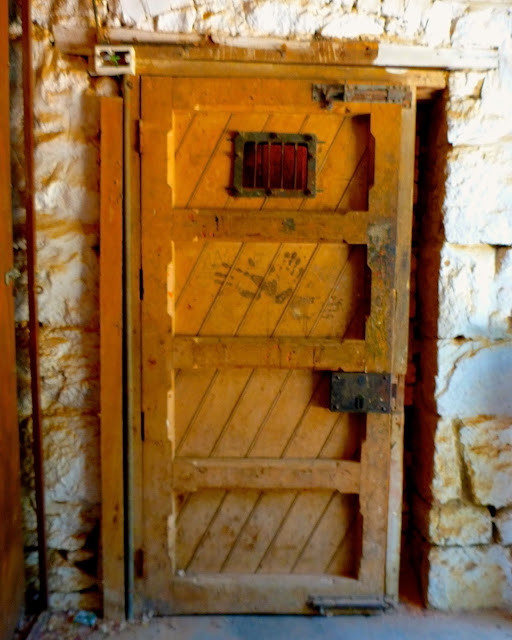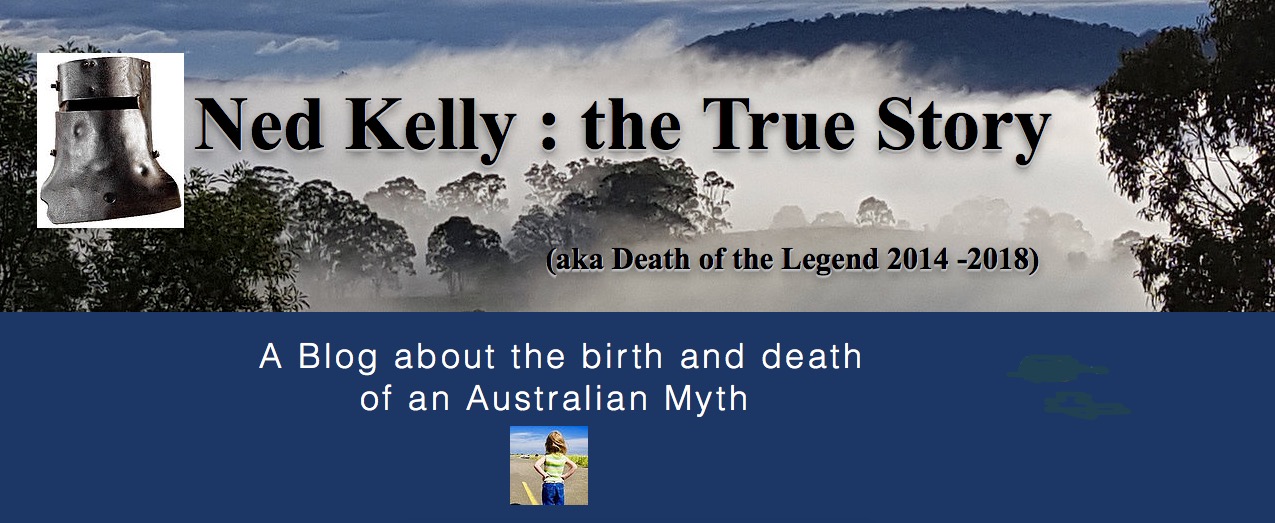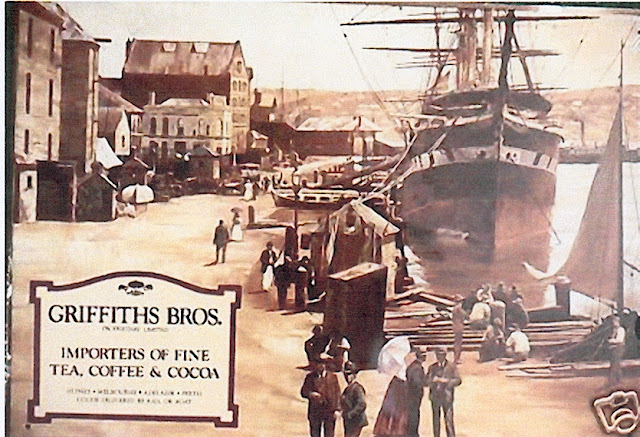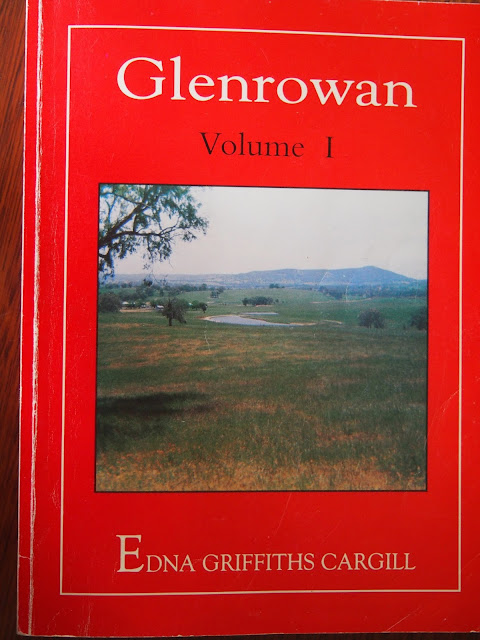The Kelly Vault calls itself a History Museum, and is dedicated to the
preservation of Kelly history. I was encouraged to see this quote from the Manager of the Burke
Museum on their Facebook Page “We are not
a SHRINE. We are a MUSEUM” Also on their Facebook Page there is a reference a
to an ABC interview with Doug Morrissey and in another place mention of Doug
Morrisseys 2015 publication “Ned Kelly : A lawless Life” – along with a single
negative comment about it - so I
thought I could discern a willingness by the people running the Vault to at
least attempt some sort of even handedness.I felt quite positive about the Vault.
Not so long ago I visited the Museum. Its
housed in an historic little four room
building known as the old “Sub-Treasury building” on Ford St in the Historic
and Cultural Precinct of Beechworth. Its
right next door to the Beechworth Courthouse the place where Ned Kelly’s
commital hearings took place for the murder of Lonigan. You can stand in the very dock where Ned
stood and remember that well known etching of him standing there, holding his
lapel with his left hand, full beard quite neatly trimmed. But don’t forget Ellen Kelly also stood there
once, and Standish, Fitzpatrick, Sir Redmond Barry, Gaunson, McIntyre and a
host of other Kelly identities have also stood or sat somewhere in that room
which you are free to explore at your leisure. (Incidentally, as you do so, and
listen to the broadcast of audio re-enactments of snippets of court activities,
see how good your Kelly knowledge is and identify the major factual mistake in one
of them – and post it in Comments if you do!!
Frankly I was so surprised when I heard it the first time I couldn’t
believe my ears so I had to listen through the entire tape again to make
certain. God only knows how many Kelly buffs have heard that tape and missed
it!)
 |
| The door to the Cell where Harry Power was kept |
But back to the vault: In the first
room there are three posters labelled “Time Line of Key events in the life
of Edward ‘Ned’ Kelly”. Whoever wrote them did a great job of sticking to
the important facts, and avoiding the temptation to inject value judgements and
subliminal messages about Ned being a victim or the Police being corrupt. The
basic story is presented in a very fair way, and after reading the Time Line, I
was looking forward to viewing the Collection.
The prize possession of the Vault would
have to be the gun called Betty. It’s the one Ned Kelly stole from someone when
he held up the Bank at Euroa, and is on prominent display. There’s also a table
top supposed to have been rescued from the Ann Jones Inn, an original Ned Kelly
death mask, pages from the original manuscripts of Ian Jones Kelly biography
and Peter Careys Kelly novel , the Kelly “armour” worn by Mick Jagger, the
Sydney Nolan painting that looks like it was done with spray cans a Kelly
tragic paid around $170,000 for, other guns, …and so on. Certainly there’s
plenty there to keep any Kelly buff engaged for a good while.
But – and I know you were all expecting
this from me - but, yes, there are problems, some of them minor like my
disappointment that the man behind the desk knew nothing about one of the other
rifles on display – it was unlabeled, lying next to some farming equipment that
once belonged to Aaron Sherrit ( I think it was). And I didn’t believe him
when I asked if the documents on display, such as the Arrest Warrant for Dan
Kelly were the real thing or facsimiles and he said they were all real. (Can
someone confirm that?)
But there are major problems as well.
The first of these is that the professional
objective factual approach adopted in “The Time Line” is abandoned in the
Explanatory notes that are attached to many of the exhibits, and yes, it’s the
old Jones-Kelly Mythology that is injected into the narrative without the
slightest hint that the backgrounder information provided might be pure
speculation. Heres an example : In the Time Line it accurately
says of the Fitzpatrick Incident “April 15th 1878 The Fitzpatrick Incident takes place
resulting in the arrest of Ned’s mother…”
But elsewhere in the Museum in the explanatory attached to the (real or
facsimile?) arrest warrant for Dan, even though all writers seem to disagree on
exactly what happened it says “Fitzpatrick made a clumsy advance towards
14 year old Kate Kelly and a brawl erupted” Why pick that description
rather than the ones which suggest Kate had no involvement of that kind at all?
Remember Ned saying that if Fitzpatrick had molested his sister Victoria
wouldn’t have been big enough to hide him? Or instead, why not insert Molony’s
allegation that Kate was raped? The
point is, in a museum, unless it’s a Private Museum dedicated to pushing one
particular line – such as to Glorify the dear Leader Kim Jong Il - if no one is
really sure what happened, the uncertainty should be made clear. Museums are
not there to make up stories but to tell us about what is known, and about what
is unknown. Where they wish to speculate - and it can be perfectly legitimate
to do so - it should be made clear.
Heres another example : of Neds trial, the
time line accurately says this:
“28-29th October : Neds trial is
held at the Supreme Court in Melbourne. Judge Sir Redmond Barry presides. Ned
is found guilty of Lonigans murder and is sentenced to death”
But elsewhere in the Museum, accompanying
that famous engraving of Ned in the Dock in Beechworth (Real or facsimile?) it
says this about Neds trial:
“Ned was incompetently defended and
virtually at the mercy of his Judge, Sir Redmond Barry who wanted to rush the
trial through in a single day”.
Now, the statement that Ned was
incompetently defended, and at the mercy of the Judge is a matter of opinion,
but the claim that Neds trial was rushed is simply wrong. This notion remains
popular among Kelly sympathisers who remain determined not to acknowledge that
it was refuted as far back as 1967, at the Symposium whose deliberations were
published in the book “ Ned Kelly Man and Myth”. But even if they hadn’t read the
book, if someone from the Vault had bothered just to go next door to
the Courthouse they would have read this
“A typical murder trial in Beechworth in those days took from one to two
hours!”
Heres another example : in keeping with the
Timelines adherence to the facts, the Republic of North East Victoria isn’t
mentioned. However in the display about Glenrowan it says this:
“In June 1880 the Kelly Gang planned a
pre-emptive strike against their Police enemies – first step in creating the
republic of North East Victoria that would win justice for the Kellys and all
the folk of the North East who had supported them.”
And later it says “..they would move on
Benalla, rob the Bank of New South Wales and proclaim the Republic”
In the display referencing the Kelly Armour
it says this : “In the early months of 1880 as the Kelly outbreak gained
momentum into a full blown rebellion the gang and their inner circle were
plotting their climactic event – the declaration of a Republic in North East
Victoria”
In another place, a poster about Ned Kellys
Jerilderie Letter says “perhaps most importantly it forshadows his attempt to
establish a republic in the colonies north east".
Nowhere in the Kelly Vault could I find
even the slightest hint that the notion of a Republic of North east Victoria might be something other than a well established fact. I defy anyone to tell me that an
uninformed tourist who visited the Vault, such as the Dutch family who were there when I was, after reading the information
displayed would take away anything other than a firm belief that a plan to establish a Republic
of North east Victoria was an established part of Australian history. What
would they think and how would they feel about the Vault if later they learned the truth about the Republlic of North East
Vicoria, which is that its an idea that’s almost completely without foundation? Nowhere in the Kelly Vault is there anything like an acknowledgement that the
Republic of North east Victoria is actually the controversial pet theory developed nearly 50 years ago by the Vaults “Historical Consultant" Mr Ian Jones
,and is an idea which was never mentioned by Ned Kelly? How many people leaving the Vault would believe that The Republic of North East Victoria wasn’t mentioned even once in the
numerous speeches Kelly made to Hostages, in any of his many letters, by any of his supporters, it was not heard
about by Police spies who infiltrated the Gang, it was not discussed at Ned
Kellys trial, its not supported by any documentation such as the fondly dreamed
of but never found ‘Declaration', or the elusive Notebook of Minutes, and is an
idea which is contradicted by almost every deed and act and word of Ned Kelly’s
during his entire lifetime?
The Kelly Vaults support and unqualified
promotion of the flimsy Jones-Kelly Myth about the Republic of North East Victoria is
unprofessional and ought to be damaging to its reputation. Its clear from the
fact that Ian Jones was there at the opening of the Vault, that his name is
first on the list at the Vault entrance of Acknowledgements offered to
supporters of the vault, by the quotes of Ian Jones posted in the Vault itself,
and by the content of the display information, that he had a dominating
influence on the way in which the Vault tells the Kelly story, just as he
influenced the way Peter Fitzsimons told the story in his 2013 book.
Clearly Ian Jones wields enormous power in
the Kelly world around Beechworth, and equally clearly, nobody dares challenge
it. Further proof of this might be in the fact that in the many bookshops and
places in Beechworth where Kelly material is sold, its impossible to find a
copy of Ian MacFarlanes book The Kelly Gang Unmasked, or of Doug Morrisseys
book, A Lawless Life, but Fitzsimons book is available and of course at many places you can buy Ian Jones latest,
The Kellys and Beechworth.
So here is the challenge for the Kelly
Vault and for Matt Shore who appears to be its main promotor : do you want the
Kelly Vault to be a worthy Museum that tells the Kelly story
without fear or favour, with integrity and respect for honesty and openness? Or are you going to allow it continue to promote the dodgy Jones-Kelly Myths, and be part of Ian Jones determination to silence anyone who
dares question him, and become simply another vehicle for the promotion of his private fantasy about Ned Kelly, a virtual Private Museum? If thats what you’re going to do then maybe Ian Jones and his supporters, and maybe Joanne Griffiths and people like Noeleen Lloyd and the Kelly family should be the ones funding it, not the State Government. Its not the job of the Government to fund private hobbies.
I am not asking the Vault to tell the story MY way, but its Kelly sympathisers who keep on insisting the Jury is still out on Ned Kelly.'Man or Myth? Hero or Villain?' it says right at the entrance to the Vault on a Ned Kelly Adventure Camps poster which describes the Museum as “ Our new museum"! But if thats what they believe why aren’t they putting the other side of the argument to the public as well? In fact, not putting the other side of the argument in the Museum, and heavily promoting the Jones-Kelly myths alone proves what I have been arguing all along, that this "Hero or Villain” argument is not a sincere argument but a tactic of the Kelly Sympathisers.
At the moment, the Vault is more of a Shrine than a Museum. I am so disappointed.
I am not asking the Vault to tell the story MY way, but its Kelly sympathisers who keep on insisting the Jury is still out on Ned Kelly.'Man or Myth? Hero or Villain?' it says right at the entrance to the Vault on a Ned Kelly Adventure Camps poster which describes the Museum as “ Our new museum"! But if thats what they believe why aren’t they putting the other side of the argument to the public as well? In fact, not putting the other side of the argument in the Museum, and heavily promoting the Jones-Kelly myths alone proves what I have been arguing all along, that this "Hero or Villain” argument is not a sincere argument but a tactic of the Kelly Sympathisers.
At the moment, the Vault is more of a Shrine than a Museum. I am so disappointed.
In Part Two of this post, I will expose another problem at the Vault.





